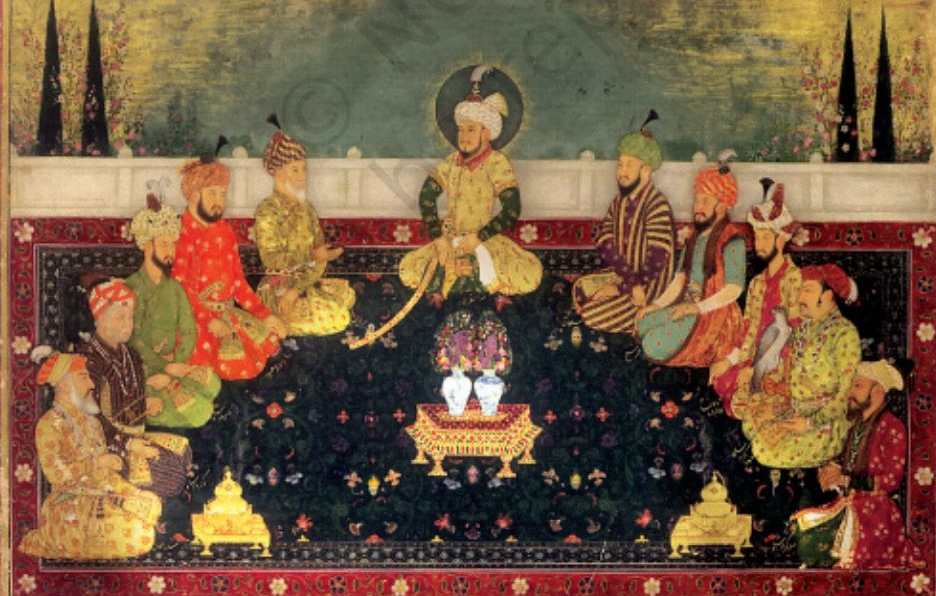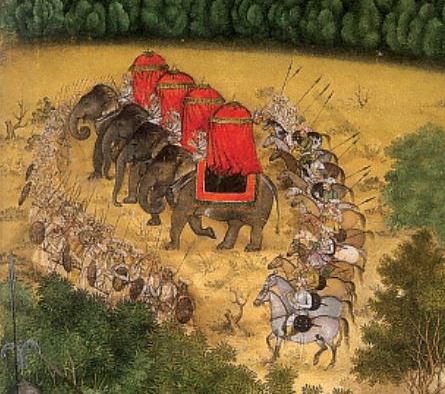Mughal Dynasty: Did you know that the Mughals did not like to be called Mughal or Mongol? The reason behind this was that the Mongol ruler Genghis Khan's memory was associated with the massacre of many people. Though the term became associated with their empire, it was not the name that the rulers chose for themselves. They referred to themselves as Timurids (descendants of the Turkish ruler Timur).
What was the Mughal Dynasty/Empire?
The Mughal Empire was the most influential dynasty that ruled over the Indian subcontinent before colonial rule. Historians often count it as the one of the longest-reigning dynasties that India ever saw. The dynasty achieved such heights that it had taken over a large part of northern India from the 16th century to mid 18th century.
Who were the Mughals?
Put simply, the Mughals were the successors of not only one, but two lineages of kings. From the paternal side, Mughals were the descendants of the king of Iran and Iraq, Timur, while from the maternal side, they were the successors of the king of Mongol tribes, Genghis Khan.

A miniature painting (dated 1702-1712) of Timur, his descendants and the Mughal emperors.
Who was the founder of the Mughal Empire?
The great ruler Babur was the founder of the Mughal Empire. In the first Battle of Panipat in 1526, Babur defeated the Sultan of Delhi, Ibrahim Lodi. This event marked the establishment and beginning of the rule of Mughals in India.
| Emperor | Reign |
| Babur | 1526-1530 |
| Humayun | 1st Term: 1530 – 1540 2nd Term: 1555 – 1556 |
| Akbar | 1556-1605 |
| Jahangir | 1605-1627 |
| Shah Jahan | 1627-1658 |
| Aurangzeb | 1658-1707 |
| Bahadur Shah I | 1707 – 1712 |
| Jahandar Shah | 1712 – 1713 |
| Furrukhsiyar | 1713-1719 |
| Rafi Ul-Darjat | 1719 |
| Rafi Ud-Daulat | 1719 |
| Muhammad Ibrahim | 1720 |
| Muhammad Shah | 1719-1748 |
| Ahmad Shah Bahadur | 1748 – 1754 |
| Alamgir II | 1754 – 1759 |
| Shah Jahan III | 1759 – 1760 |
| Shah Alam II | 1760 – 1806 |
| Akbar Shah II | 1806 – 1837 |
| Bahadur Shah II | 1837 – 1857 |
Who became the most famous Mughal rulers?
The most well known and powerful rulers were Babur, Humayun, Akbar, Jahangir, Shah Jahan and Aurangzeb. Apart from this, some of the other rulers were Bahadur Shah I, Muhammad Shah, Ahmad Shah Bahadur, Alamgir II and Bahadur Shah II.
Babur (1526-1530)
Babur was the first emperor of the Mughal dynasty. He played a pivotal role in the establishment of the Mughal Empire by defeating the Sultan of Delhi, Ibrahim Lodi, in the first Battle of Panipat in 1526. Later in the Battle of Khanwa in 1527, Babur defeated the ruler of Mewar, Rana Sanga. In 1528, Babur handed defeat to the Rajputs.
Humayun (1530-1540) (1555-1556)
Humayun did not have a great rule as he was forced to flee to Iran after being defeated by Sher Khan in 1539. He managed to recapture Delhi in 1555 but didn’t live long and died the next year.
Akbar (1556-1605)
The great ruler Akbar was by far the most famous emperor of the Mughal Dynasty. He succeeded his father Humayun at the young age of 13. He implemented various reforms for the smooth functioning of the administration. His many conquests helped to expand the rule of the Mughal Empire. Akbar was also quite fond of art and culture and encouraged the development of both. He led military campaigns in Bengal, Orissa and Gujarat. Between 1585-1605, Akbar annexed Qandahar, Kashmir and Kabul.

Mughal army on campaign.
Jahangir (1605-1627)
Jahangir succeeded his father Akbar and continued his military campaigns. The Sisodiya king of Mewar, Amar Singh, accepted Mughal rule. He died in 1627.
Shah Jahan (1627-1658)
Jahangir was succeeded by his son Shah Jahan who is well known for commissioning the iconic Taj Mahal in the memory of his wife Mumtaz Mahal. His reign was marked by conflict between his sons for the throne. His son Aurangzeb deposed him and Shah Jahan was imprisoned for life.
Aurangzeb (1658-1707)
Aurangzeb was the sixth Mughal ruler. He established the practice of Sharia law. He led many military campaigns against the Marathas and Sikhs. He faced many rebellions by the Sikhs in the north, by the Ahoms in the north-east and others. His death in 1707 was marked by succession unrest between his sons.
CBSE Video Courses for All Subjects for Class 10 Students
Class 10 students can study effectively with the help of video courses prepared by the subject matter experts. These video courses will explain the concepts in a simple and interactive manner which will help learners to understand clearly. The videos are available for all major subjects which includes social science. Click on the below image:
Note: All images have been taken from NCERT Class 7 History textbook (Our Past-II).

Comments
All Comments (0)
Join the conversation